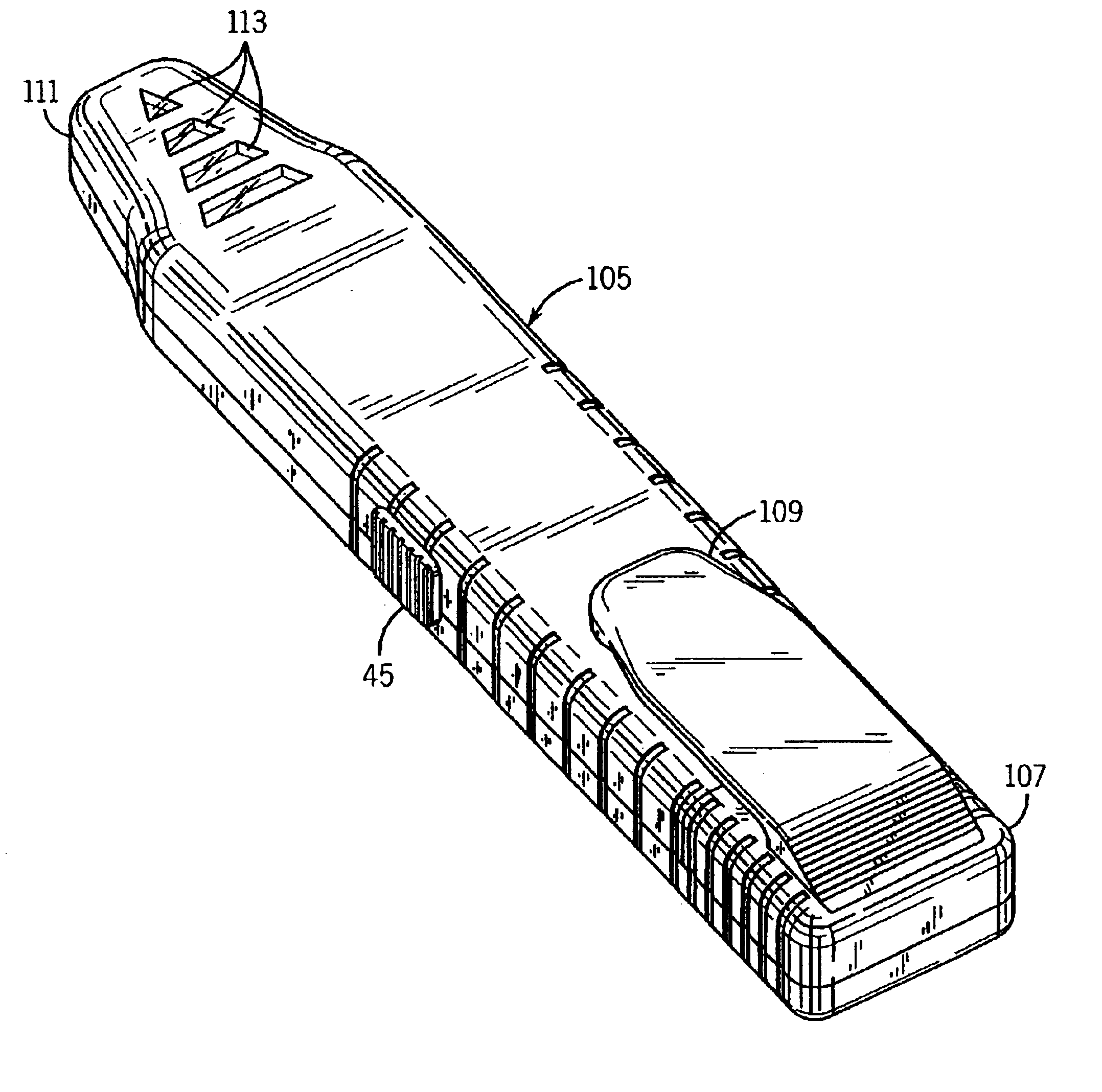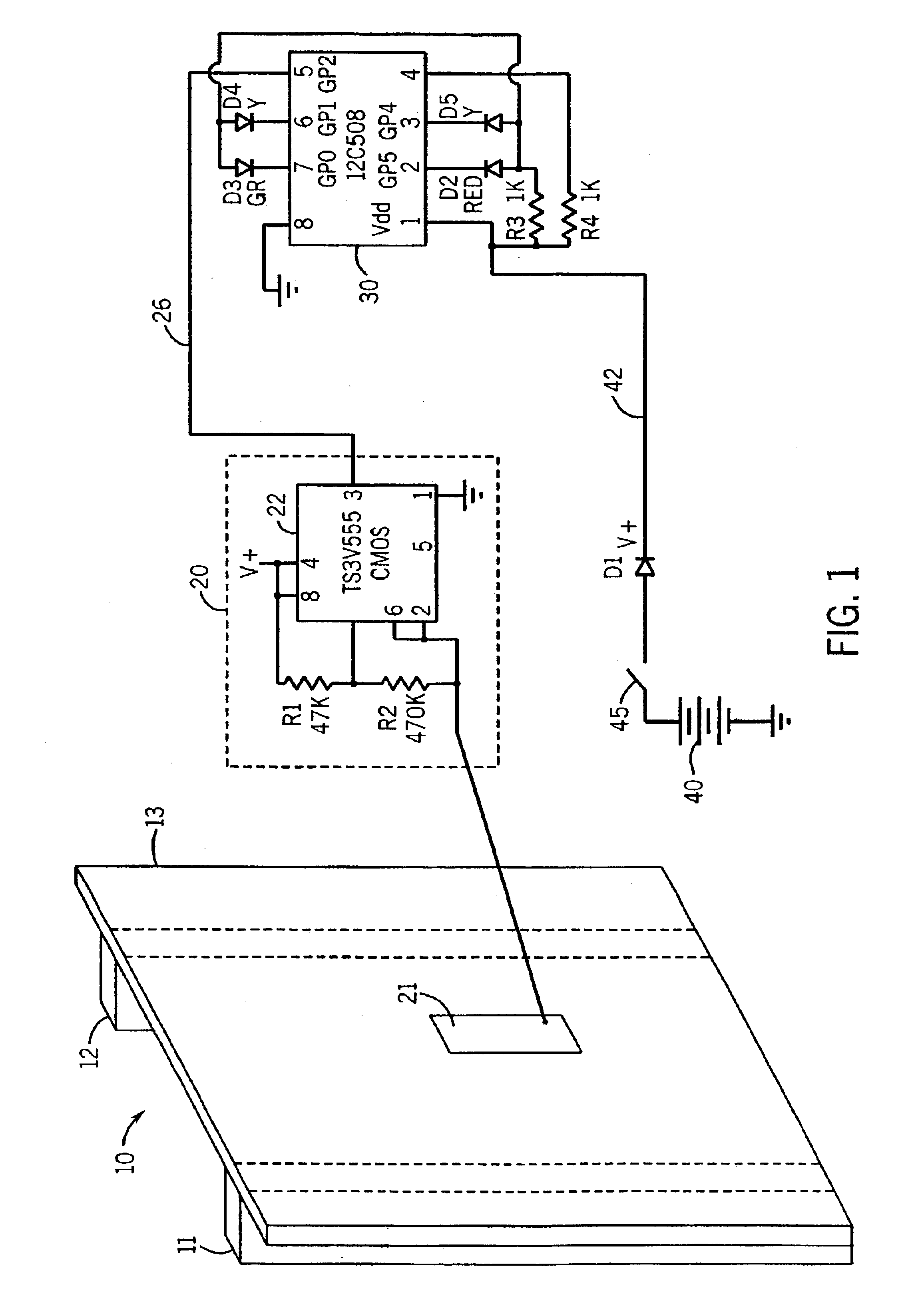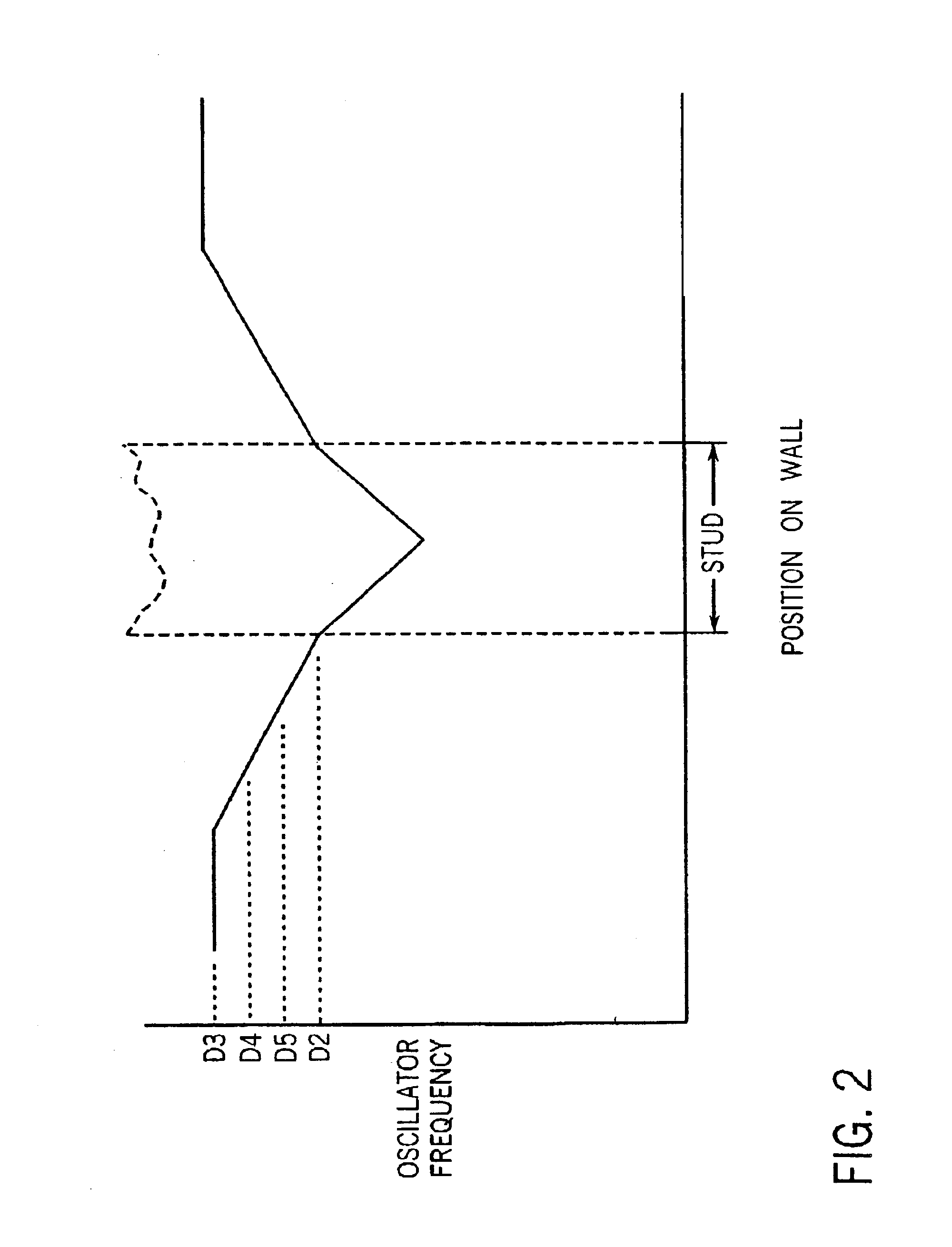Compact stud finder
a compact, finder technology, applied in the field of electronic instruments, can solve the problems of inability to visually detect the location of the hidden substructure (i.e. the studs), the inability to find the presence of alternating current in the wall, and the cost of mass production, etc., to achieve the effect of efficient finding the location
- Summary
- Abstract
- Description
- Claims
- Application Information
AI Technical Summary
Benefits of technology
Problems solved by technology
Method used
Image
Examples
second embodiment
Referring to FIG. 3, there is illustrated a circuit diagram of the invention. Shown on this figure is a portion of a wall structure 60, studs 61, 62 and wall board 63 to be illustrative of one way of operating the invention. In this case, it is desired to locate the positions of the hidden studs 61 and 62. As shown in FIG. 3, there is a metallic sensor plate 71 connected to a CMOS oscillator 70. The frequency of the oscillator 70 is determined by IC 72, the values of resistors R1 and R2 and the capacitance presented by the plate 71.
The capacitance of the plate 71 is determined by the surrounding medium including the wall material, the studs, the circuit and the person holding the device. It is desirable to reduce the stray capacitance as much as possible since this will improve the sensitivity of the plate 71. The capacitance of plate 71 is influenced considerably by the operator and the housing of the device.
Capacitance is related to its potential with respect to other objects. If ...
first embodiment
Referring back to FIG. 3, the remainder of the circuit of FIG. 3 acts in the same way as FIG. 1. When the sensor plate is above a section of the wall 63 with no studs it will cause the oscillator 70 to run at frequency f1. When the sensor is above a section of the wall 63 that has a stud below it the oscillator will have a different frequency f2. The output of the oscillator 70 goes to a microprocessor circuit 80 via line 76.
The microprocessor circuit 80 is programmed to measure the frequency difference f1 minus f2. As in the first embodiment, this can be done by any suitable means. For example, the microprocessor circuit 80 will typically include a counter. The counter can be programmed to count the number of times the oscillator output signal to the microprocessor goes high in a certain period, which yields a measure of the frequency of the oscillator output. If the frequency difference between the first measured frequency and the subsequently measured frequencies exceeds an amoun...
PUM
 Login to View More
Login to View More Abstract
Description
Claims
Application Information
 Login to View More
Login to View More - R&D
- Intellectual Property
- Life Sciences
- Materials
- Tech Scout
- Unparalleled Data Quality
- Higher Quality Content
- 60% Fewer Hallucinations
Browse by: Latest US Patents, China's latest patents, Technical Efficacy Thesaurus, Application Domain, Technology Topic, Popular Technical Reports.
© 2025 PatSnap. All rights reserved.Legal|Privacy policy|Modern Slavery Act Transparency Statement|Sitemap|About US| Contact US: help@patsnap.com



